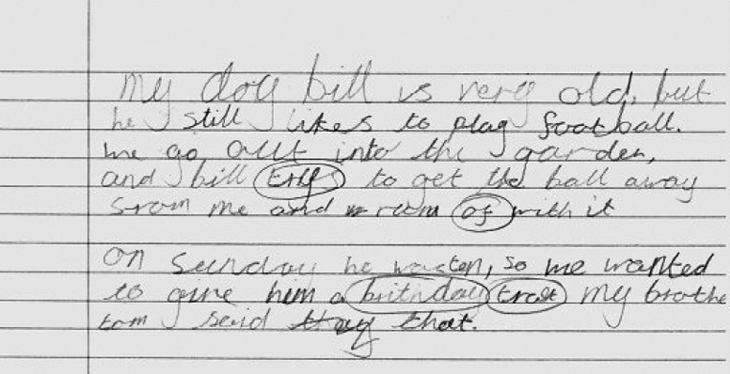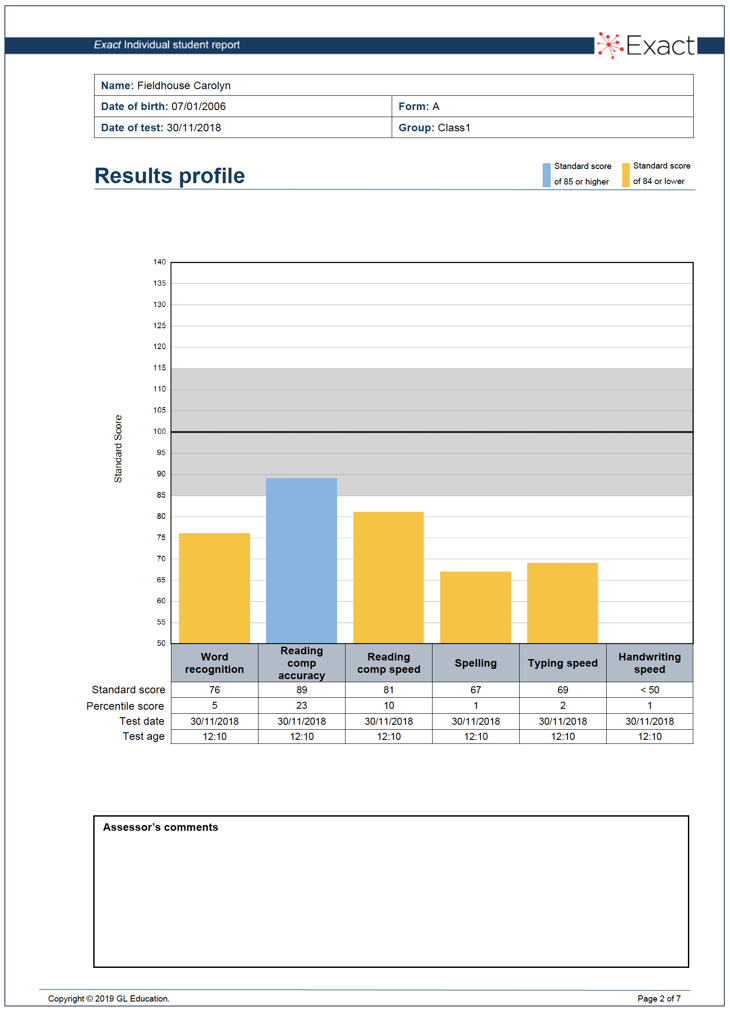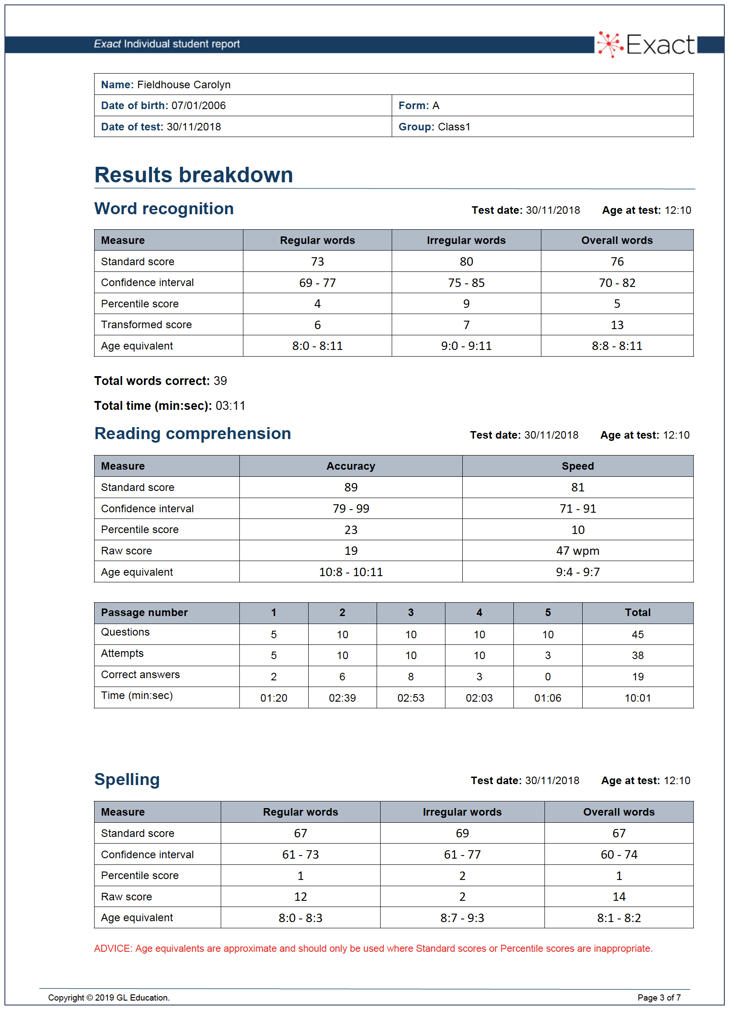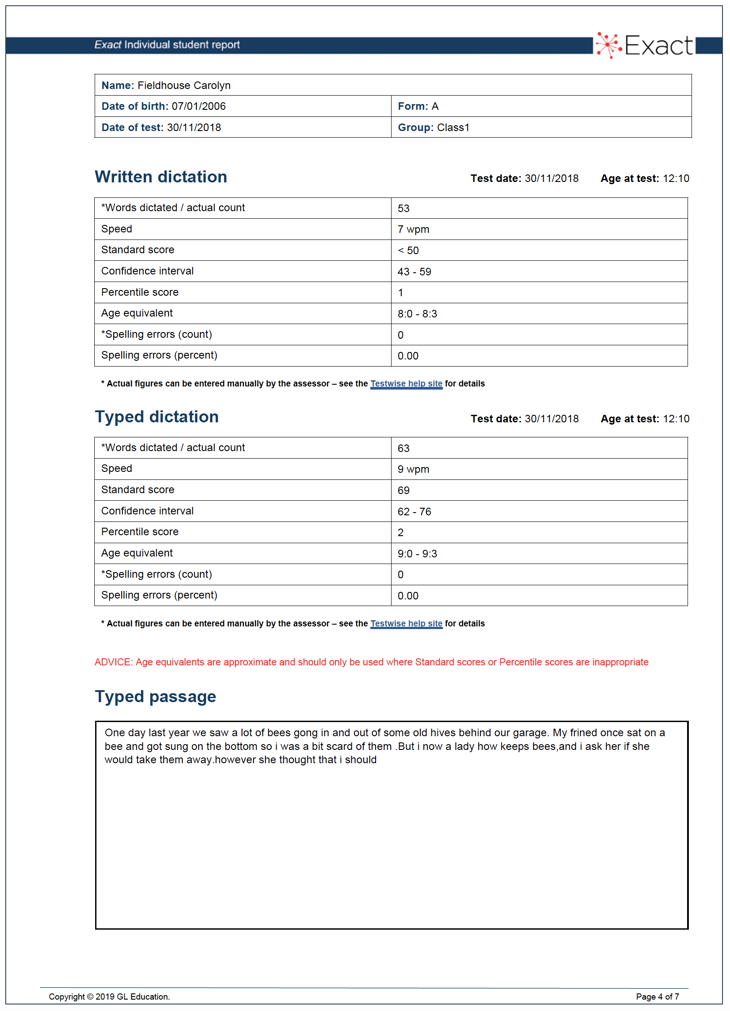Case D: a 12-year-old with multiple problems
Results profile
See Figure 13. The bar charts for this student show the wide range and severity of her difficulties. In spite of these difficulties, however, her reading comprehension accuracy is in the normal range, which suggests that she is of normal intellectual ability. Her extremely low score for handwriting indicates that she probably has severe dyspraxia/dysgraphia, but that is only part of her difficulties.
Results breakdown
See Figure 14. It is apparent from her reading comprehension times that she worked slowly but steadily through the passages and was able to answer the majority of the questions in the second and third passages correctly, which confirms that she understood these passages. Nevertheless, her low scores in spelling and word recognition strongly suggest dyslexia, as does the fact that she only managed to spell two irregular words correctly. In the typed passage she (surprisingly) managed to spell ‘hives’ and ‘garage’ correctly, but writing ‘now’ for ‘know’ and ‘how’ for ‘who’ are typically dyslexic errors, as is her tendency not to notice omissions (sung, scard, ask).
Her handwriting speed is very slow (7 wpm, below 50 standard score). Figure 12 shows her actual writing, which is legible – i.e. it is possible to read all the letters – but she makes a number of spelling mistakes. (Note that the student’s handwriting attempt may be scanned, stored and displayed on the Exact report – see the Testwise help site for information on how to do this.)
Conclusion
This student would probably be eligible for access arrangements when the time comes – see Section 5 for guidance on this. In the meantime, she clearly needs support on all areas of literacy and should be encouraged to become more fluent on a keyboard. If she has not already been assessed for dyslexia, use of LASS would be helpful in this regard (see Section 3.3.1).

Figure 12. Sample of handwriting by Case D

Figure 13. Results profile for Case D

Figure 14. Results breakdown for Case D


